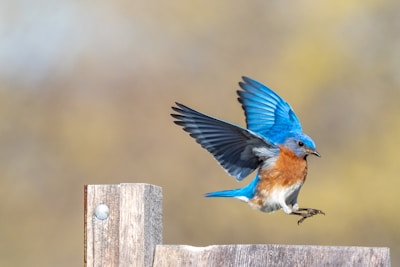Understanding the Basics of Bird Flight
Birds are fascinating creatures that have the amazing ability to fly. Watching a bird soar through the sky is a beautiful sight to behold. If you have a pet bird, you may be wondering how you can teach it to fly safely. In this article, we will explore some training tips for helping your feathered friend achieve avian freedom.
Before you begin training your bird to fly, it’s important to understand the basics of bird flight. Birds have hollow bones, which make them lightweight and well-suited for flying. Their wings are designed for lift and propulsion, allowing them to glide effortlessly through the air. Birds also have a keen sense of balance and coordination, which helps them navigate their surroundings with precision.
When training your bird to fly, it’s essential to create a safe environment for them to practice in. Make sure the area is free of obstacles and hazards that could potentially harm your bird. You may want to consider using a large, open space such as a living room or backyard for training sessions. This will give your bird plenty of room to spread its wings and practice flying without any obstructions.
Start by encouraging your bird to flap its wings and hop around. This will help them build up their wing muscles and develop the strength needed for flight. You can use treats or toys to motivate your bird to move around and exercise. Be patient and give your bird plenty of positive reinforcement as they practice flapping their wings.
Once your bird is comfortable flapping its wings, you can start teaching them to take off and land. Place your bird on a perch or your hand and gently lift them into the air. Allow them to flap their wings and practice hovering for a few seconds before gently lowering them back down. Repeat this process several times to help your bird get the hang of taking off and landing safely.
As your bird becomes more confident in its flying abilities, you can start teaching them to fly longer distances. Encourage your bird to fly from one perch to another or across the room. Use treats or toys to guide your bird and reward them for successfully completing the flight. Be patient and give your bird plenty of opportunities to practice flying until they feel comfortable and confident in their abilities.
It’s important to remember that not all birds are natural flyers. Some birds may have physical limitations or health issues that prevent them from flying. If you have concerns about your bird’s ability to fly, consult with a veterinarian or avian specialist for guidance.
Teaching your bird to fly safely requires patience, practice, and a safe environment. By understanding the basics of bird flight and following these training tips, you can help your feathered friend achieve avian freedom and enjoy the thrill of soaring through the sky. Remember to be patient and encouraging as you guide your bird through the training process, and always prioritize their safety and well-being.
